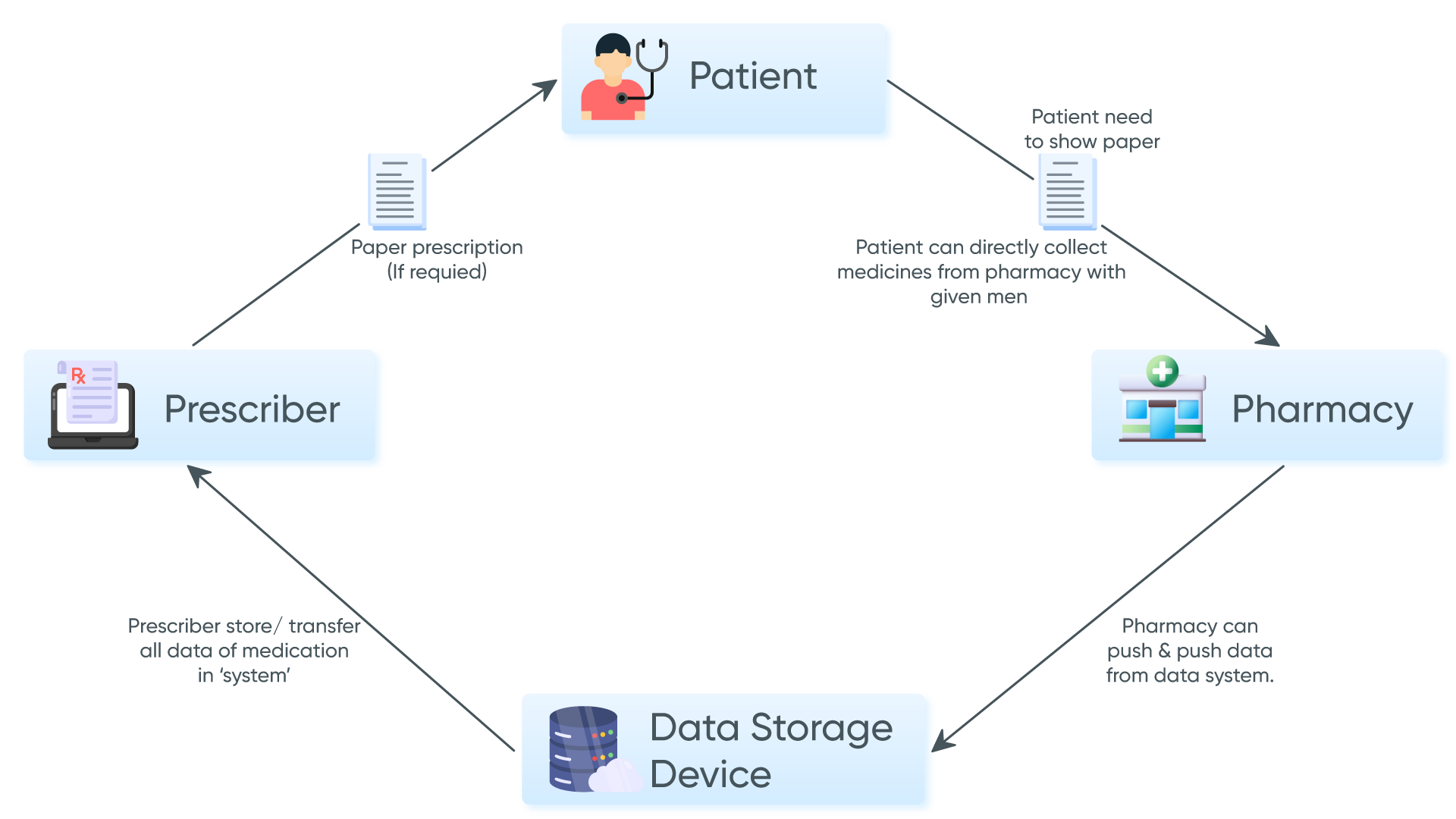Overview
The client was a US-based technology service provider for medical practice management applications. Family Clinic is located in Colorado. It was an Independent clinic serving a diverse urban population. Staff includes 8 physicians, 9 nurses, and 4 administrative staff. Capacity for 70-80 patients daily. Hospitals include general check-ups, vaccinations, screenings, and treatment for minor illnesses.
Business challenges
The client used one EHR that did not provide e-prescribing and lab integration. The clinic aimed to integrate an E-Prescription feature into its existing EMR (Electronic Medical Records) software to enhance treatment speed and patient care. Handwritten prescriptions were causing confusion at pharmacies, leading to difficulties interpreting prescribed medications. Additionally, the challenge of securely maintaining handwritten prescriptions added complexity. Tracking the status of ordered medications and tests post-prescription was a cumbersome task for the clinic staff.
Thinkitive Solution
Thinkitive’s business analysts and SMEs connected with the client to understand the client's requirements. After connecting multiple times with the client, the team has finalized the requirements as per the priority.
The team has created a Business requirements document and a Software requirement specification document, which includes workflows, use cases, and prototypes.
We provide integration with multiple E-prescription vendors such as Scriptsure, Surescripts, Fullscript, Wellevate, iD.me & MDToolbox.
Each e-prescription vendor is associated with multiple pharmacies. It helps healthcare providers prescribe medicine per the patient’s preferred pharmacy.
Based on the client's requirements, the team has developed an application that provides an e-prescription feature and real-time prescription processing and integrates with laboratories and pharmacies.
The e-prescription feature enables healthcare providers to order medicine electronically and accurately with a few clicks. It saves time and improves the accuracy of medication. Delays in diagnostic tests and reports affect the speed of treatment and patient care.

Solution Highlights
1. Electronic Prescription Generation
This feature helps healthcare providers create/generate electronic prescriptions through the software with a few clicks. It reduces the manual work and saves time as the suggestion details populate as per medicine. It also reduces the paperwork, thereby increasing accuracy.
2. Drug and Allergies Interaction
While prescribing medication, the system's automatic detection of patient allergies and drug interactions minimizes the chances of prescription errors. This feature enhances safety and accuracy in medication management.
3. Medication Management
It helps healthcare providers to search for and select medicines as per requirement. It also includes drug interaction checks. Drug interaction check improves patient safety.
4. Dosage and Instructions
This feature helps healthcare providers select several dosages, frequency for taking medicine, and instructions. It helps prescribe an accurate quantity of medicine to the patient as required.
5. e-Signature
It provides an e-signature facility so healthcare providers can approve and authenticate the prescription. Once the medicines are confirmed, the healthcare provider digitally signs the document before sending it to pharmacies or laboratories.
6. Electronic Rx Transmission
This feature allows the transmission of the e-prescription with integrated pharmacies and laboratories. Transmission of electronic prescriptions within a second improves the processing speed of pharmacies and laboratories, resulting in improved patient care.
7. Alerts and Reminders
To prevent service delays, the provider can use the software to set reminder alerts for the pharmacy. These alerts indicate pharmacies and laboratories should complete the medication orders on priority. The alerts and reminders are reflected in integrated pharmacy and laboratory information systems.
8. Refill Request
Through e-prescribe integration, pharmacies or providers can seamlessly send refill requests and receive electronic responses, streamlining the refill process for medication prescriptions.
9. Patient Education
It provides information to the patient about their medication, including dosage instructions and possible side effects of drugs.
Value Delivered
-
It improves patient safety as it eliminates incorrect dosages and medicine.
-
Reduces paperwork and handwritten errors caused by handwritten prescriptions.
-
Healthcare providers can generate e-prescriptions in less time and with minimum manual entries.
-
Patients can access their e-prescriptions electronically using the patient portal, which improves access to health information.
-
E-prescriptions seamlessly integrate with EHRs, which helps to access complete patient medical history.
-
E-prescription reduces costs associated with paper and printing.
